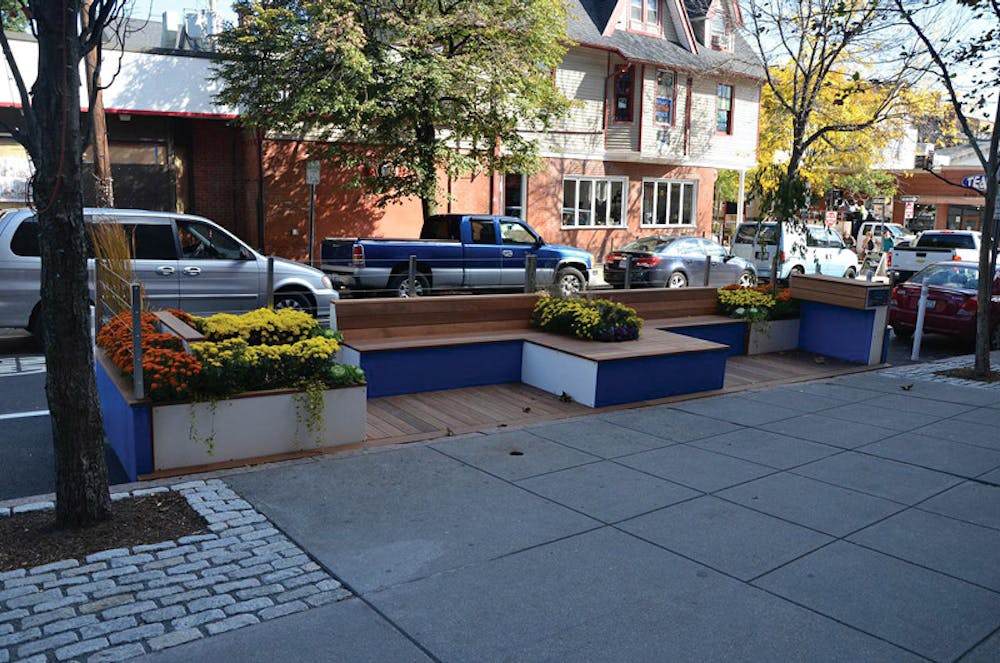A new Providence zoning ordinance could go into effect by the end of this year that would streamline commercial corridor guidelines, reform parking regulations, create new transit-oriented development zones and form a new landmarked historical district.
The ordinance, which is currently in its fifth draft, has undergone 18 months of public comment and revisions by both an advisory committee and a city planning committee. The City Council held a hearing on the measure Wednesday afternoon. The new regulations are likely to be adopted in November and would go into effect 30 days later, said Robert Azar, director of current planning at the city’s Department of Planning and Development.
The goal of this effort is to “evaluate the best of what we have” and to make laws that allow for new development to “replicate that traditional urban fabric,” Azar said, adding that the best urban designs prioritize mixed-used structures and public transportation while preserving the character of the city.
The city’s current zoning code was last rewritten 20 years ago, and its core components remain from the 1950s. This marks the first time in the last 60 years that the entire ordinance will be redone, Azar said.
Bonnie Nickerson, director of long-range planning for the city, cited the new Comprehensive Plan — a separate document to guide city development decisions finalized in August 2012 — as a major motivation behind the zoning ordinance overhaul. The plan highlights sustainability, equity, creativity, collaboration and engagement as the guiding principles for the city’s development moving forward. This ordinance is just one aspect of intentions to implement the Comprehensive Plan, which will also increase low-income housing, artistic development and public awareness about the city’s initiatives.
On College Hill, the ordinance would maintain west Thayer Street as an institutional zone that is heavily restricted to commercial development, while expanding the commercial zone on east Thayer Street to the western side of Brook Street. That commercial zone will be part of a new overlay district — an area in which two zoning categories, such as institutional and commercial designations, overlap — that will make the University’s development in the area easier.
“Zoning is so important because it guides growth across the city,” said Marisa Quinn, vice president for public affairs and University relations. “Our focus has been encouraging the city to think about the value that institutions play in terms of the character and culture and economy of the city.”
Construction projects in the overlay district will still be required to follow the base commercial guidelines of the area, such as height and parking restrictions, but the University will no longer have to apply for a special-use permit to build in the area. Requiring the permit had made University development unpredictable and made outside groups more reluctant to partner with the University on construction plans since they were contingent on city approval, Quinn said.
Another goal of the change is to help businesses develop by making regulations clearer and increasing flexibility in parking and height regulations, Nickerson said.
When crafting parking guidelines, Nickerson said, the city has tried to “reflect the many options” Providence residents have, such as biking and using public transportation. Businesses would not have to spend as much on development because they would be required to provide fewer parking spaces than before, according to the shift in parking regulations. In the proposed ordinance, small lots and lots in transit-oriented development districts — areas in which public transportation is widely accessible — would have further exemptions than other commercial developments.
The ordinance has also accounted for sustainability: New regulations regarding storm water runoff, heating and parking aim to make the city a greener place, Azar said.
The ordinance proposes a new landmarked historical district that would restrict construction in areas with historical value. Nickerson said the city is in the process of officially designating this district.

ADVERTISEMENT




